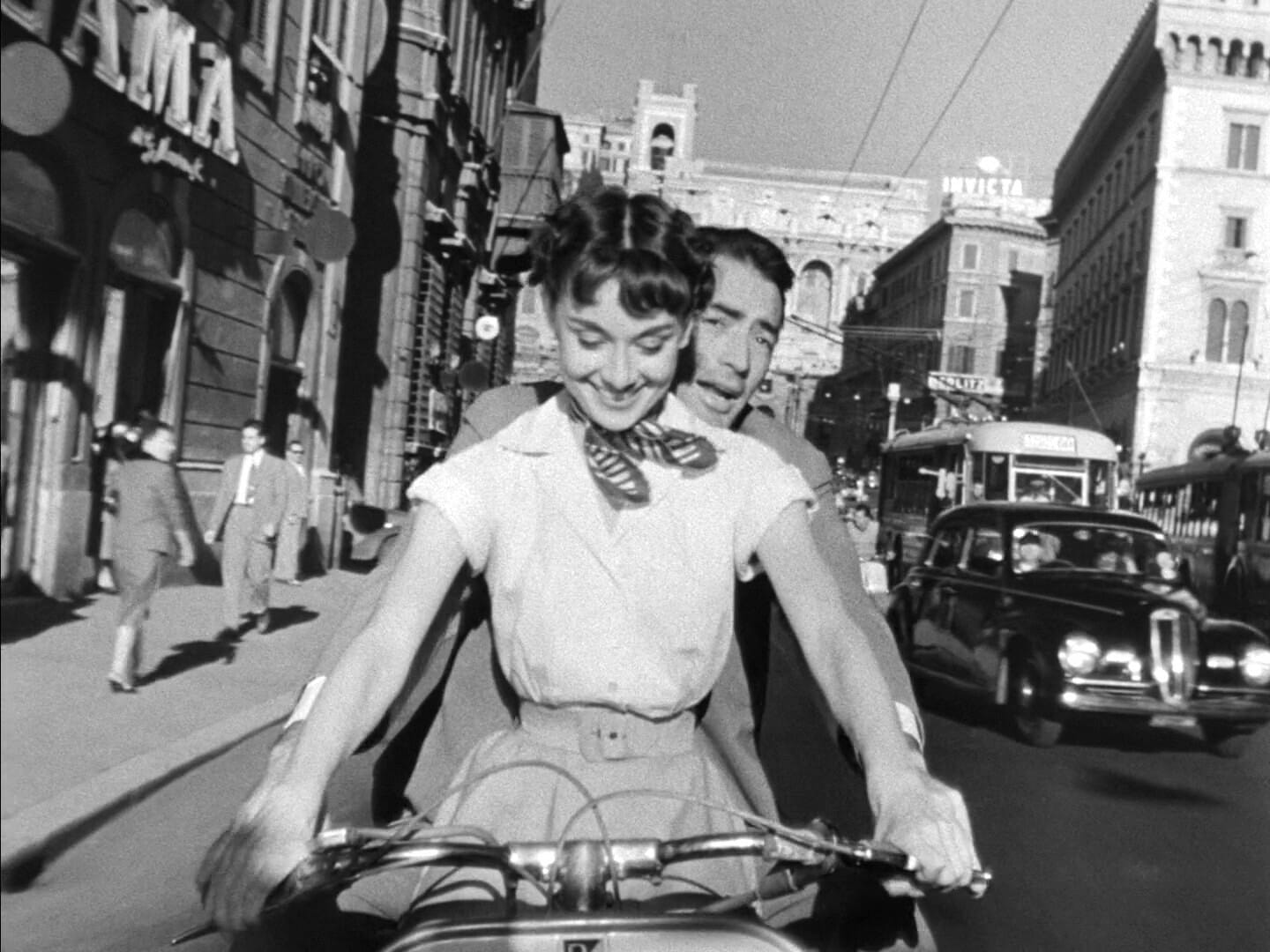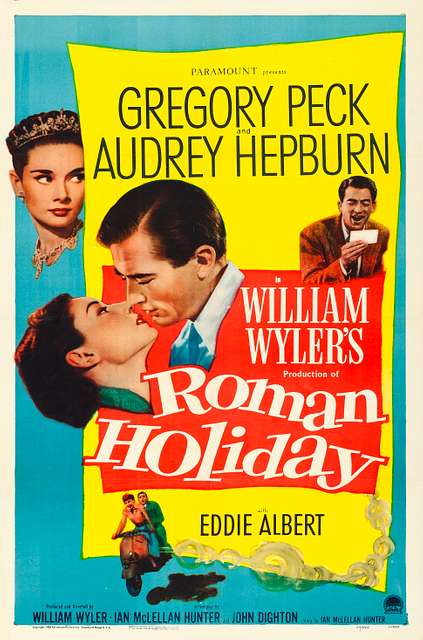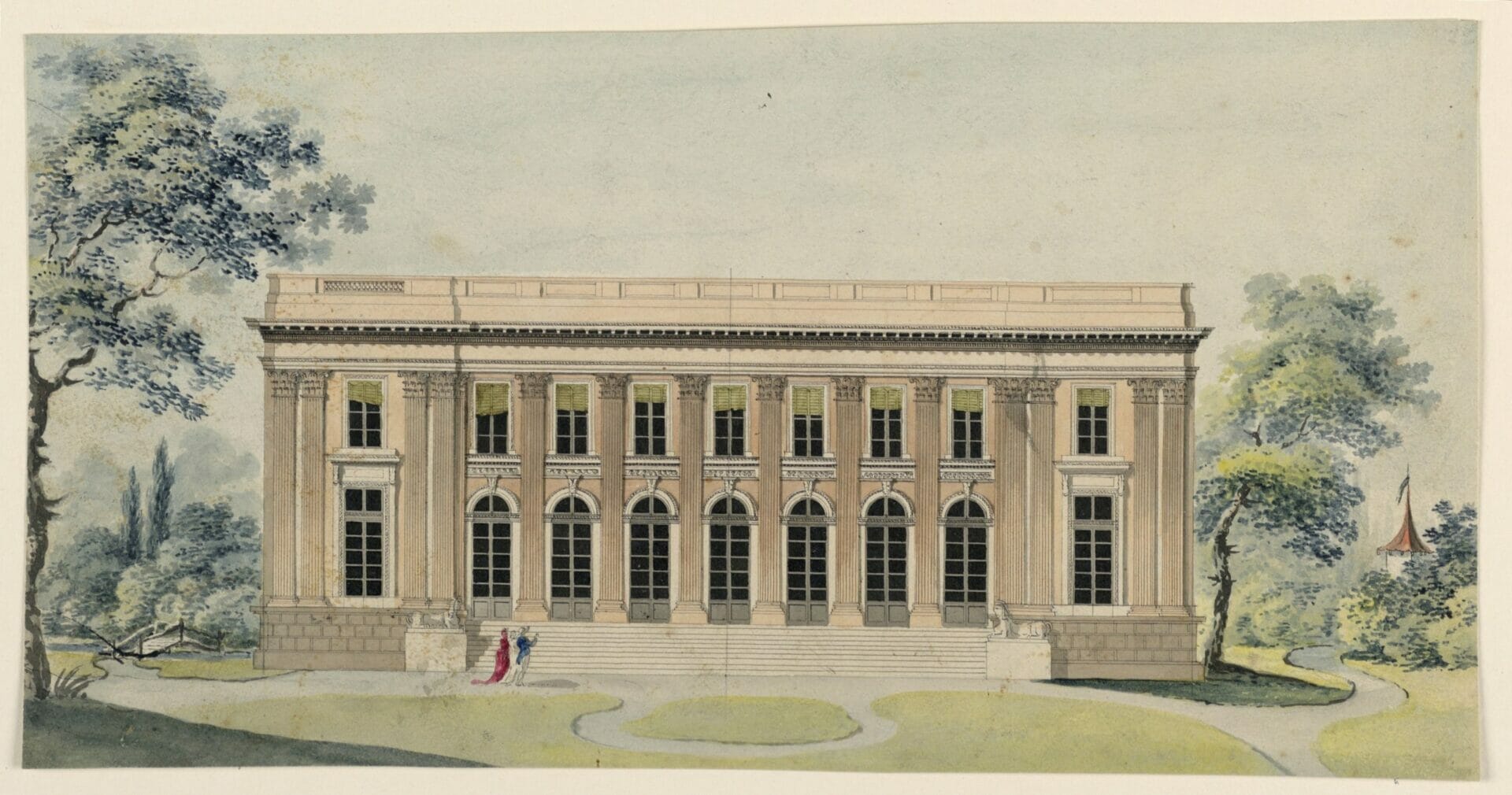
Roman Holiday | Re-watching a classic romance, 70 years later
Year
Runtime
Director
Music by
Country
Format
Genre
Subgenre
By
Even if you don’t recognize the title Roman Holiday (1953), you’ll certainly recognize the star. The role of Princess Ann was Audrey Hepburn‘s breakthrough performance, the first of many leading roles in her career, and it would position her as a fashion icon for decades to come.
Her co-star Gregory Peck was so impressed with her magnetism that he insisted that director William Wyler ignore his solo-star billing contract and instead provide him equal billing with newcomer Hepburn. Peck was an established actor, having starred as a leading man in several major American movies, including three popular movies in the year 1951 alone. The studio was reluctant to promote a name no one knew – it was a risk. In the end, they agreed.
It’s safe to say it was the right decision. For her portrayal of Princess Ann, Audrey Hepburn won the Academy Award for Best Actress, the British Academy Film Award for Best British Actress, and the Golden Globe Award for Best Actress in a Motion Picture – Drama, cementing her name in pop culture forever.
- “Hit Him Again, Smitty!”
- Writing the Fantasy
- Pixie Cuts and Vespas
- La Bocca della Verità: The Mark of Film Tourism
- A Vintage Piece That Still Holds Up
- In Defense of the Rom-Com
“Hit Him Again, Smitty!”
Crown Princess Ann (Hepburn), of an unnamed nation, is at wits’ end. We meet the princess on the last stop of her whirlwind European press tour, and we immediately notice two things about her: one, her stunning beauty, and two, her restless boredom. Joe Bradley (Peck), a handsome American reporter in Rome, is clever. We meet him as he plays poker and cuts sly remarks to his friends around the table, in a sea of cigarette smoke. He’s unlucky, evidently, and broke – which means he’s desperate.
When the princess succeeds in escaping from the Embassy one night, she runs into Bradley on the streets of Rome. In him, Ann sees a once-in-a-lifetime opportunity to enjoy anonymity for a day and, in her, Bradley sees the potential for a once-in-a-lifetime story. Together, they’ll have a brief Roman holiday.
Of course, because this is a romantic comedy, plenty of hijinks ensue while the two protagonists fatefully fall in love. There are many memorable moments in the movie, none more so than the finale, which remains one of the most tremendous and bittersweet endings in romantic comedy history.
Writing the Fantasy
The off-screen story is just as intriguing as the story of the runaway princess. Roman Holiday was originally written by American novelist and screenwriter Dalton Trumbo, then living in exile as one of the Hollywood Ten. For refusing to answer questions about his political beliefs before the House Un-American Activities Committee, an investigative body dedicated to identifying Communists in the United States, Trumbo faced imprisonment and was blacklisted from the industry.
After serving eleven years in prison, Trumbo wrote the screenplay for Roman Holiday and hired screenwriter Ian McClellan Hunter – himself later blacklisted – to front for him. Roman Holiday went on to win the Academy Award for Best Story. But it was not until December 1992 that the Board of Governors of the Academy of Motion Picture Arts and Sciences voted to credit Trumbo with the achievement, as well as the award (Hunter’s name was removed). In October 2011, the Writers Guild of America West officially credited Trumbo with the story of the movie.
Trumbo is still remembered and celebrated as a writer to this day, evidenced by projects like Jay Roach‘s 2015 biopic Trumbo, starring Bryan Cranston (Breaking Bad) as the Hollywood screenwriter. Cranston was nominated for the Academy Award for Best Actor for his performance.
Knowing Trumbo’s circumstances at the time of writing, the foundational fantasy of escape and freedom that Roman Holiday builds upon becomes even more layered. The context of the script offers a new lens through which to view a decades-old fable about the goodness in people and the small pleasures of life.
Pixie Cuts and Vespas
Halfway through the movie, Audrey Hepburn famously receives a haircut as part of her character’s rebellious and transformative day in Rome, going from nearly waist-length hair to a pixie cut. Upon the release of Roman Holiday in 1953, women rushed to the salon to chop off their locks. Hepburn is credited as the first woman to popularize this ultra-short hairstyle, which is still going strong seventy years later. The wardrobe, too, is of note: for her work on the movie, Edith Head, already a Hollywood titan, earned her fifth Academy Award for Best Costume Design.
Critics and audiences, particularly viewers in the U.K. and U.S., largely adored the movie and demonstrated its impact via considerable tourism. In fact, the teal Vespa depicted on the poster for Roman Holiday has come to symbolize the enduring American romanticism of Italy, as well as the prosperity of Cinecittà (nicknamed Hollywood on the Tiber) in the postwar years.
La Bocca della Verità: The Mark of Film Tourism
Film tourism, or “cineturismo” in Italian, the phenomenon of traveling to a place based on its portrayal in the media, is an increasingly relevant trend in our connected and digital age. International blockbusters and television shows such as Jon M. Chu‘s Crazy Rich Asians (2018), Todd Phillips‘ Joker, Mike White‘s The White Lotus, Game of Thrones, The Lord of the Rings and Harry Potter film series, and recent iterations of Daniel Craig‘s James Bond, to name only a few examples, have led to observable spikes in tourism to the locations they feature so glamorously. This raises questions, of course, about how film tourism affects the local cultures of the places featured on screen.
Thanks to William Wyler’s movie, Rome became known to international audiences as a culturally rich playground for foreigners to find love and mischievous fun. The post-World War II blockbuster was gold for Italy’s tourism industry; today, the Mouth of Truth (Bocca della Verità) monument is still an obligatory stopping point for tourists to reenact Gregory Peck’s iconic hand-in-sleeve prank.
“Which of the cities visited did Your Highness enjoy the most?”
from Roman Holiday
“Each, in its own way, was unforgettable. It would be difficult to – Rome! By all means, Rome. I will cherish my visit here in memory as long as I live.”
A Vintage Piece That Still Holds Up
The question about Roman Holiday in today’s world is deceptively simple: why is it still so good? It’s one of those rare black-and-white movies that modern audiences will voluntarily watch, and it continues to show up in lists of the best romantic comedies.
Most likely, the answer lies in the power dynamics. Of course, stellar performances, cinematography, and costumes contribute to the movie’s greatness, but it is the freshness of how Joe Bradley and Princess Ann navigate power in their relationship that keeps the audience watching. Class, gender, and the withholding of truth consistently complicate how each character behaves toward the other and create a sense of alternately having the upper hand.
William Wyler allows much of this exchange to occur wordlessly, communicated instead through careful close-ups and remarkably subtle performances by Hepburn and Peck. For Wyler, a prolific artist whose career spanned six decades, Roman Holiday was a unique comedic project. By applying his trademark focus on human relationships to the romantic comedy genre, he brings an unusual depth to Ann and Joe, as well as an undercurrent of realist melancholy to the runaway princess trope.
The movie covers a lot of thematic ground, thanks to how it plays with power, gender, class, lies, duty, and ever-dwindling time. But among all of these topics of discussion and clearly revealed by the movie’s ending, is the core dilemma of limits. What do we owe each other, Roman Holiday asks, both on an interpersonal level and at large? Knowing that, how can we still make room for what we owe ourselves? With such a timeless moral issue in the packaging of a charming love story, it’s no wonder that Roman Holiday endures.

In Defense of the Rom-Com
Roman Holiday toes the line between myth and reality, like many romantic comedies. The theme of escapism as Ann neglects her repressive role and instead spends the day exactly how she wishes, falling in love all the while, holds a mirror to the audience of the fantasy.
At their best, romantic comedies are powerful tools of cultural commentary, as well as vehicles of entertainment. Whether sincere like Roman Holiday, or satirical like 10 Things I Hate About You (1999), these movies portray complex female characters, their relationships, and how they react to their societally-prescribed expectations.
It’s a good opportunity then, in the spirit of celebrating Roman Holiday‘s 70th Anniversary, to watch the iconic romantic comedy and discuss the many ways its legacy lives on.
Tag
Buy a ☕ for Hypercritic










